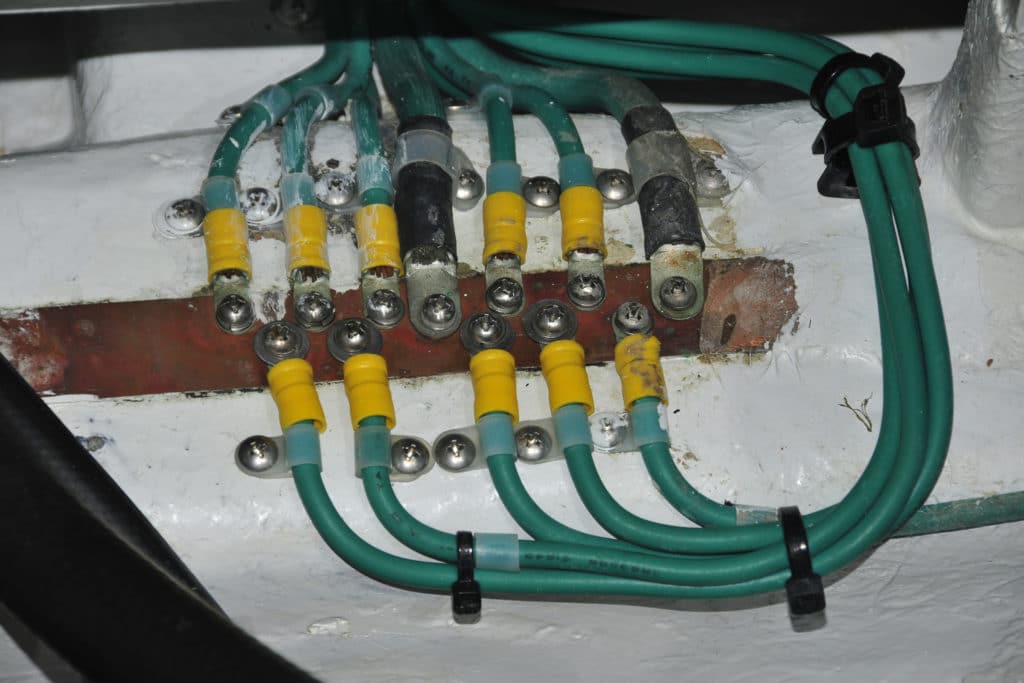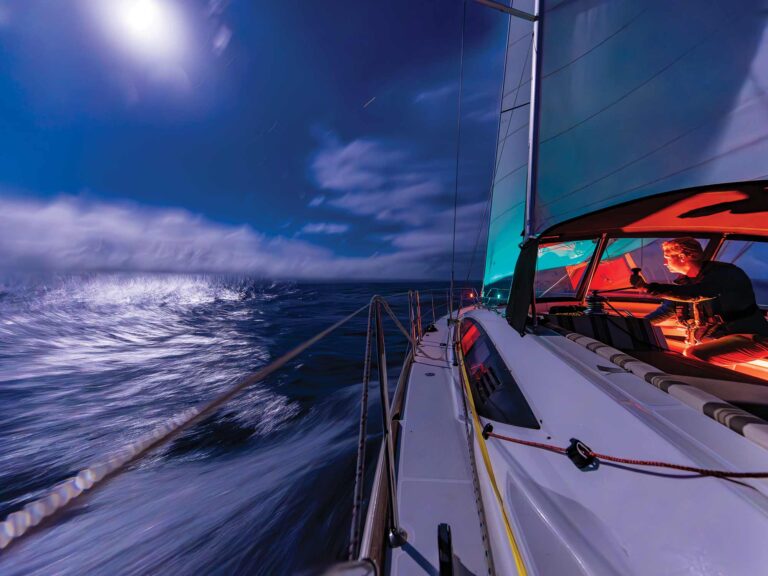
Bonding systems connect underwater metals, including through-hull fittings, struts and rudder stocks. The system has several goals, the primary one being corrosion protection for these metals via an anode, or “zinc,” to which the system is also connected. In the world of corrosion, the anode is, when measured on the galvanic scale, less noble, or more corrosion-prone, than other metals, which allows it to sacrifice itself to protect bronze and stainless-steel alloys. As long as the two maintain a very good low-resistance electrical connection, the anode can do its job.
How low is low? The maximum allowable resistance between any bonded underwater metal and the system’s anode is a scant 1 ohm. If you aren’t familiar with electrical resistance, think of it as one page out of a phone book (i.e., very low). By the same token, the voltage level involved in galvanic corrosion prevention is equally low; it’s measured in millivolts, or thousandths of a volt. For this reason, that resistance must also be kept to an absolute minimum.
Exposure to water begets corrosion, and corrosion begets high resistance. Generally, where marine electrical systems are concerned, every effort should be made to keep connections and even wiring well above bilge water. Bonding systems, however, present a special challenge: They are connected to below-the-waterline fittings that are invariably adjacent to or even submerged in bilge water. It is, at best, a very challenging electrical environment.
While all onboard connections benefit from the use of corrosion-resistant materials, this is especially true for bonding systems. The wires used in this system must be tinned, and type II or III (very flexible) and at least size number 8 (or number 6 if used as part of a lightning protection system). While heat-shrink terminals are not a prerequisite, they are well-suited for this application.
Alternatively, bonding-system conductors may be a copper strip, provided they are a minimum of 1⁄32 inch thick and ½ inch wide. Connections must be made using through-bolts and never tapping screws. Provided the copper strip is thick enough for four threads of engagement, it may be tapped to accept machine screws. Per American Boat and Yacht Council standards, copper braid or tubing may not be used for this purpose.
If employed, the copper strip may consist of one or two “branches” that run down either side of the hull interior, below the sole and above normal bilge-water levels, from which wires or “drops” are run, connecting the through-hulls and other metals. Alternatively, tinned copper bus bars may be located in several locations; through-hulls and other underwater metals would then be connected to these, and the bus bars connected to each other. Copper strips or bus bars are then connected to a zinc anode(s).
Connections using ring terminals and screws benefit from the use of a conductive paste, such as Thomas & Betts Kopr-Shield. Once again, tapping screws should never be relied on to complete any electrical connection, including bonding wires. Once the connection is complete, it should be sprayed with a corrosion inhibitor, one that will not easily be washed off if repeatedly doused with seawater. The product I use for this application is CRC Heavy Duty Corrosion Inhibitor; it dries to a waxlike consistency and is especially resilient.
For existing systems, thoroughly inspect all connections, making certain they are clean, tight and free of corrosion. For those that aren’t, if the materials are otherwise sound, they can be disassembled and cleaned using a 3M Scotch-Brite abrasive pad sprayed with a commonly available electrical cleaner, and then reassembled using the previously described process and products. If your vessel is hauled during this operation, you can use a multimeter to confirm that no more than 1 ohm exists between any bonded underwater metal and the zinc anode(s). Achieving this goal will provide your underwater metals with the greatest possible corrosion protection.
Steve D’Antonio offers services for boat owners and buyers through Steve D’Antonio Marine Consulting stevedmarineconsulting.com. This article first appeared in the January/February 2018 issue of Cruising World with the title “Ties That Bond.”








